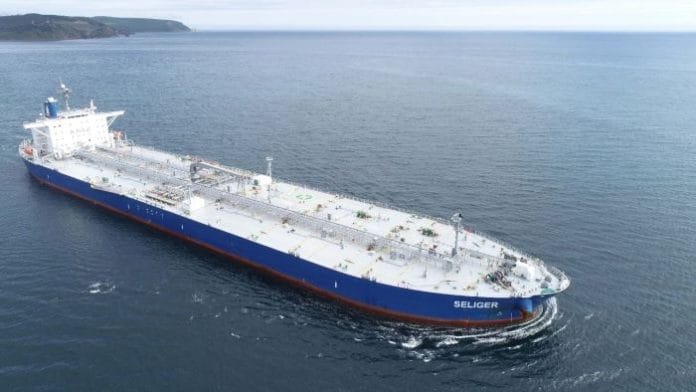Market commentary and analysis from Luca Santos, currency analyst at ACY Securities– Recent disruptions in the Red Sea have brought about a notable shift in the dynamics of refined oil product markets. The resurgence in refining margins, triggered by these disruptions, prompted a re-evaluation of Goldman Sachs refined product crack forecasts considering the updated refining capacity outlook.
The ripple effects of Red Sea disruptions continue to exert a substantial influence on refined product markets, compelling vessels to navigate longer routes around the Cape of Good Hope. This not only spurs an uptick in tanker demand but also leads to a depletion of available landed commercial inventories. Volumes through the Suez Canal have undergone a significant drop, approximately 60 per cent from 2023 levels, contributing to the ascent in clean product freight rates from around $6/bbl to approximately $8/bbl.
This surge in product freight rates, in turn, has substantially bolstered refining margins across various regions and complexities. European cracking margins, for instance, have witnessed an upswing of about $5/bbl from year-to-date lows. Despite short-term dynamics being significantly influenced by Red Sea developments and the volatility in oil tanker markets, we maintain that refined product volatility and the undervalued nature of deferred distillate margins are rooted in our anticipation of a structurally tight refining environment.
The rally in prompt distillate and gasoline cracks, particularly in Europe (ARA) and the US (NYH), has outpaced Goldman Sachs initial fair value estimates by an approximate margin of $5/bbl. While on the surface refining margins seem robust, a closer examination reveals that the market is perhaps underestimating the potential for refined product volatility and, more significantly, undervaluing deferred distillate margins.
A key observation lies in the implied volatility for refined products, which has dipped below crude volatility. This discount fails to account for the relative exposure of refined products to possible disruptions in the Red Sea and downplays the structural tightness downstream as opposed to the upstream crude markets, where spare capacity remains ample. Despite a decline in crude volatility since the preceding summer, the downstream markets should brace for heightened seasonality and increased volatility.
Zooming in on distillate futures markets, it becomes apparent that they are currently pricing in a resolution to the Red Sea disruptions by June. However, we contend that this pricing overlooks several bullish factors. Elevated refining utilization rates, a shift toward a lighter crude slate, escalating freight costs, and the enduringly high global natural gas prices are the primary structural tailwinds influencing distillate margins.
A parallel surge has been seen in summer gasoline cracks, aligning with Goldman Sachs expectations, amid a backdrop of bearish inventory trends. The relative values for premium gasoline and US Tier 3 sulphur credit prices indicate octane constraints within projected scenarios. As a strategic move, Goldman Sachs have suggested a Long Sum24 European gasoline (EBOB) crack trading recommendation, securing a commendable $5.27/bbl profit. Correspondingly, our Sum24/cal25 US RBOB gasoline-Brent crack forecasts have been revised down from $22/16/bbl to $22/14, reflecting the impact of weakened inventory trends. Furthermore, our outlook anticipates US retail gasoline prices to average $3.4/gal over 2024-25.









